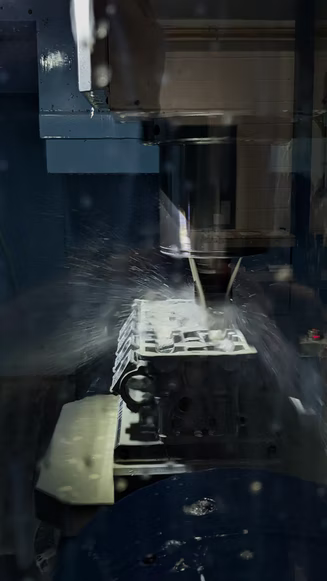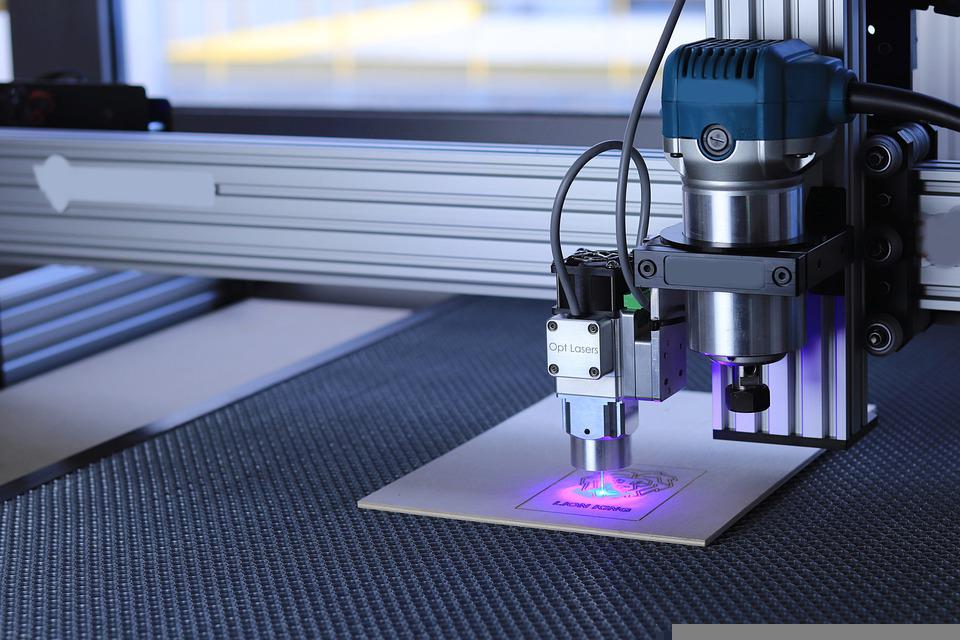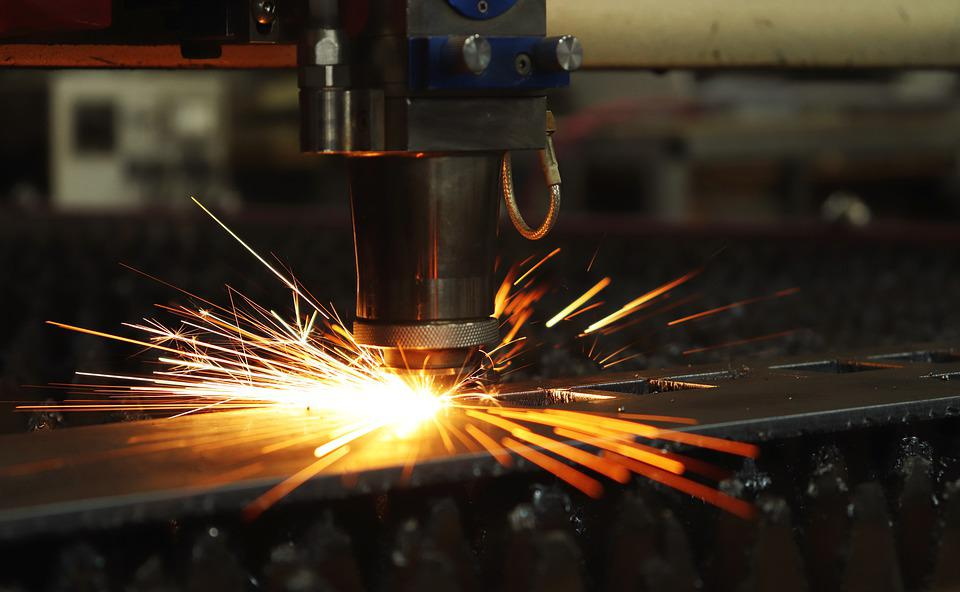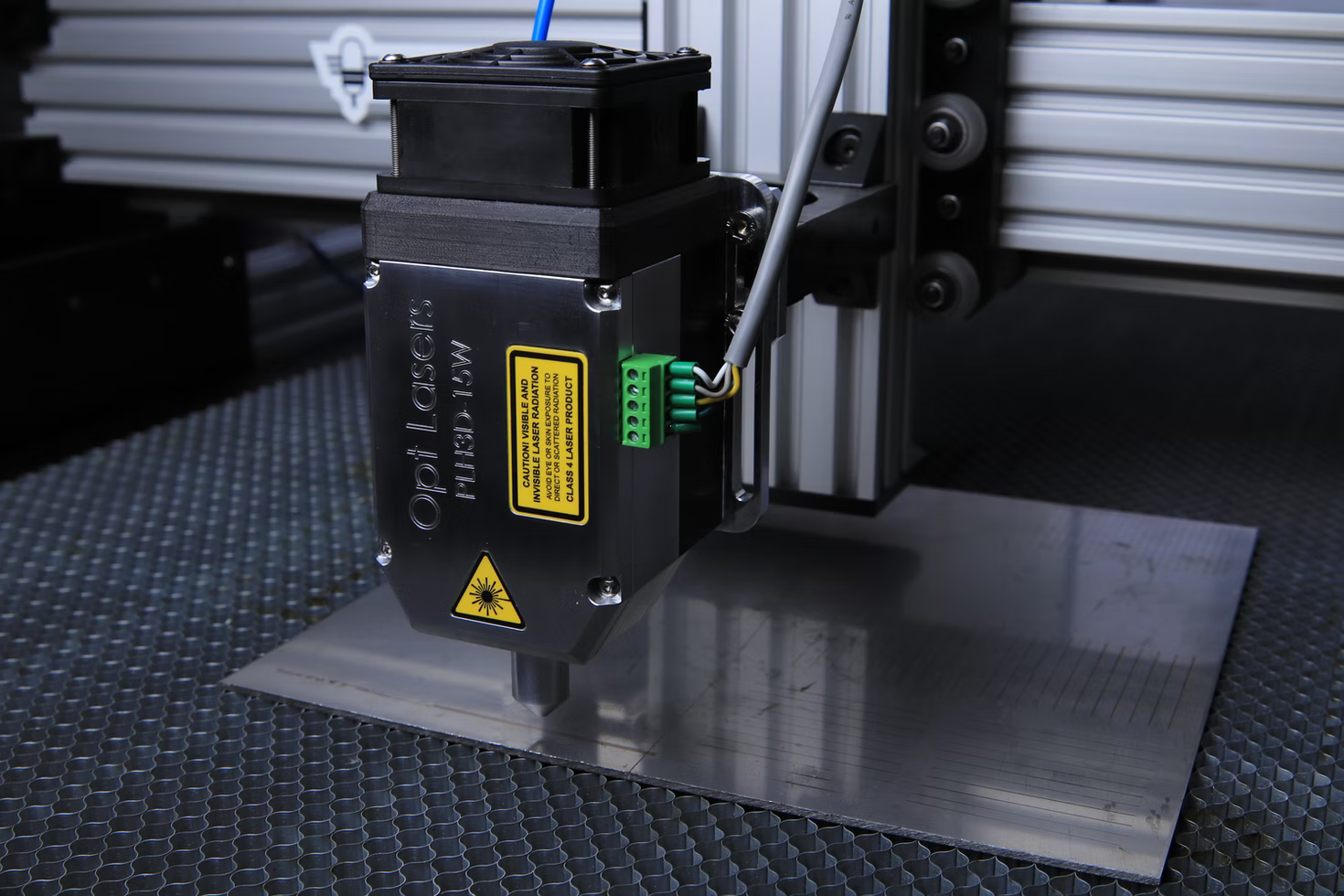A Comprehensive Guide To CNC Machines
As the world advances, leading manufacturers, startups and individual innovators increasingly adopt automated systems to improve product development processes. Long gone are the days when product design, development and launching relied on trial and error methods. At present, everything in the product development process is automated. The future is promising to be better. We cannot talk of modern-day production without the mention of CNC machines. These devices combine machinery, computer logic and software to control tooling and increase the efficiency of production processes.
What makes CNC machines unique? How have they evolved since inception? What makes them preferable for rapid prototyping? This article describes how CNC machines work, the different types available in the market and a few basics for CNC programming.
What is CNC machining?
Computer numerical control (CNC) machining is a manufacturing technique that was introduced in the 1940s. Numerically controlled machines of the 1940s and the 1950s used obsolete technologies whose data handling capabilities and sophistication are simple by today’s measures. The machinery evolved with the technological changes, incorporating analog communication channels and data management platforms before the transition to the digital era. The technological transformations impacted how fast the numerical machines operated and their machining capabilities and expanded CNC application areas.
CNC machining depends on preprogrammed commands to control the movement of tools and machining processes to create accurate parts from stock material. CNC machining is a subtractive manufacturing process. The computer-controlled numerical machines are continuously advancing and proving beneficial for invention design. Using computer-controlled production devices enables innovators to build futuristic products and assemblies using locally available and sustainable materials.

CNC Milling In Progress
CNC machining is considered a vital rapid prototyping process that enables small-scale businesses to compete favorably against established global giants. The ability of these machines to interpret complex CAD designs, manipulate the positions of machine tools and autonomously produce intricate prototypes has enabled companies to reduce their turnaround times and effectively evaluate the usability and functionality of products before launch.
The different CNC software controls a wide range of complicated production machinery. Think of any fabrication machine, be it routers, wood carving machines, lathes, desktop CNCs, laser cutters, power tools, CNC engravers, or even punch presses. These machines perform extensive work at a fraction of the time compared to a typical manual process.
The impressive evolution of CNC machines means the machinery can transform different stock materials into functional consumer products. Innovators can create delightful products from wood, metal, plastic, aluminum composites, acrylic, fiber composites and several sustainable and modern materials.
CNC machines vary in shape and size. Their functionalities are also diverse. Generally, these machines contain a frame where the entire system rests, a digital controller, several spindles and motors for horizontal, rotary and vertical motion. They have T-slot rails, gantries, guide rails, limit switches, mechanical manipulators (rack and pinion assemblies), collets, ball screws and vacuum pumps. As mentioned earlier, the machines differ in design and functionality. Some contain all or part of the listed components. More importantly, they have an interface where the operator monitors internal machining operations. It also comes with CNC software and suitable communication platforms.

A CNC Laser Machine Creating Products From Acrylic
How CNC Machines Work
The operation of CNC devices relies on computers. It synchronizes commands to ensure appropriate cuts, tool feed and transition for a perfect and accurate surface finish. The product development process begins with creating a detailed computer-aided design of the desired part. The industrial design company proceeds to create a program using machine-compatible software that dictates how the machine tools operate to carve out from a solid material.
The software platform allows the designer or innovator to generate codes corresponding to tool paths. The designer creates inputs to be fed to the CNC machines. The inputs or part programs handle the tooling processes. Software-based code generators operate on the principle that the manufacturing process is devoid of errors or flaws which may impede the final quality of the prototype or product.
Writing a typical CNC program is akin to writing a letter on your personal computer. The programmer has to adhere to specific syntaxes and programming rules. The syntax will vary depending on the machining processes and type of CNC machine to be used. The product development team retains a copy of the machining program on the computer and can edit it in the future to accommodate design changes.
The CNC controller reads and interprets the part programs (in the form of G-codes) before initiating the machining process. Modern CNC machines rely heavily on CAD and computer-aided manufacturing software. They increase the accuracy and reliability of machinery and machining processes. CAM software analyzes designs modeled using different CAD software. After analysis, the computerized system calculates the most effective tool movement paths and instances. The system automatically converts the movement instructions to a machine-specific format that is readable by the post-processor of the numerical control system. The final CAM file is transferred to the CNC machine, which compiles the program, self-calculates displacement and transmits information to the driver to activate the motor and carve out product designs.
Before activating the part program, the programmer simulates the movement of the tool on the computer. They then transfer the final program to the machine. Some machines allow the designer to run a second simulation. It allows the operator to set the reference points, estimate tool interferences and validate preliminary machining parts.
After the stock material and the machining tools are clamped, the operator pushes the start button to run the program. The computer-controlled machine implements the program, block by block until the desired part is formed. These processes create exact product shapes and sizes.
Some machining processes require the use of more than one tool. Consider a process that begins with milling and drilling holes of varying sizes on the surfaces. The programmer defines the hierarchy of machining processes. That determines when and how the machine will transition from a milling cutter to a drill bit. The CNC machine will automatically perform the tool changes and manipulate the position of the spindle. The machining tools can move in X, Y and Z axes depending on the part programs and the position of specific product features.
Types of CNC Machines
The possibilities of CNC machining are endless. Although milling and lathe CNCs are the most common in the manufacturing sector, several other types exist in the market. As prototype design gets sophisticated, companies and individual innovators are developing new and more capable pieces of CNC machinery. The innovators build upon the weaknesses and shortcomings of existing machines to extend research and develop more precise CNC tools.
There are several ways to categorize CNC machines. These are:
- Based on machine function (Lathe CNC, Turning, Routing, Engraving, Milling, Laser Cutting, etc.)
- Based on end-use (DIY CNC, Hobby CNC, Commercial/Industrial CNC, Portable CNC)
- Based on production material (Wood CNC, Metal CNC, Plastic CNC
- Based on working concept (Milling, Routing, Laser Cutting, Lathe, Plasma Cutting)

CNC Plasma Cutter in Action
Here is a look at the most popular types of CNC machines.
CNC Mills
CNC machines use a 3-axis system to create products from different materials. The controller of a CNC mill interprets part programs, which are in the form of G-codes. The code contains numerical and alphabetic instructions which control tool motion around the clamped stock material. When the machine interprets the code, it begins moving in X, Y and Z axes, carving out the material until the specified part design and size are achieved.
Advanced milling machines can accommodate a fourth axis and even a fifth axis. It enables milling machines to produce more complex shapes and incorporate complex design details into the final products.
Lathe CNCs
Lathe CNC machines perform a couple of machining activities. The indexable lathe tools cut stock materials following a circular motion. The lathe machine can be programmed to operate at high velocity while machining parts at impeccable precision. CNC mills and CNC lathes rely on almost similar control functions. Their controllers interpret CAM-generated codes and transmit the logic to the drivers, which activate motors for tool path transition.
CNC lathe machines operate on two axes, the Z and X-axis. Lathe machines create parts through facing, drilling, chamfering, turning, filleting, grooving, boring, threading, tapping or knurling. Each of these processes is achieved by writing or generating specific G-codes. Some CNC lathes use proprietary coding languages which generate unique machining codes.
Generally, most industry and DIY-grade CNC lathes can read and utilize standard type G-codes. Lathe machines can produce parts of varying shapes, sizes and surface finishes. The quality of the final product depends on the hierarchical order of the machining processes.
Plasma Cutters
Plasma cutting CNC machines were introduced after the early success of CNC mills and lathes. Innovators depended on the logic and control mechanisms of CNC lathes and mills to develop a new line of machinery. The design of the cutter features a gantry, slotted T-bed, drivers, guide rails, tool holder, limit switches, controllers and communication platforms. Simply, the CNC plasma cutter is a successful product that resulted from a deliberate invention design that followed a rigorous product development process and proved successful during the rapid prototyping process. Innovators tweak the design, sizes and functionality of plasma cutting CNC machines to fit business and personal manufacturing needs.
Plasma cutters are limited to metal fabrication. The machine uses a plasma torch cutter which moves in the X, Y and Z axes. The motion of the plasma cutter is computer-controlled. The intensity and quality of the plasma torch depend on the amount of compressed air, the level and concentration of the electric arc and precision of the plasma nozzle. The plasma cutter creates unique shapes on a metal surface. Plasma cutters can create parts from metal materials of varying thicknesses.
Electric Discharge Machines
Another variation of advanced CNC machines is the electric discharge device. It is a quick machining process that molds complex parts into well-designed dies through electric sparks. When using the EDM process, machine operator lays down the stock material on the machine bed. They adjust the distances between the stock material and the source of the electrical spark. Usually, the spark is generated by two electrodes. As current discharges between the electrodes of the electric discharge machine (EDM), portions of the stock material are removed from the stock material.
The computer-controlled machine alters the intensity of the electric spark by minimizing the space between electrodes. It causes the electric field to be stronger than the dielectric stock material. It causes the transfer of electric current between the two electrodes. In the process, portions of the material are stripped off from the original piece.
There are two variations of the EDM CNC machine.
- Wire EDM- utilizes computer-controlled spark erosion to create new products from materials that conduct electricity.
- Sinker EDM- the fabrication material is soaked in dielectric material before exposure to the electric arc.
The final part of this fabrication process is flushing. It is a method for removing residual debris from the end product. The debris sticks around the dielectric liquid. Flushing provides an effective way to eliminate electric discharge between the electrodes.
Water Jet Cutters
It is impressive how human civilization and innovation have led to the discovery of advanced materials and the utilization of elements that were difficult to machine. Another success story in innovative machine design is the development of CNC-based water jet cutters. These machines can cut through some of the hardest materials known to man. The CNC machining process enables innovators and industrial design companies to carve out unique products from materials like granite and hard metals.
The water jet cutter machine uses pressurized water to cut through stock material. The manufacturing process proves critical for fabricating industry-grade machine parts and tools. When the abrasive force of water is insufficient, companies opt to mix the pressurized water with fine sand that passes through the tiny water nozzles.
Some materials deform when subjected to the excess heat generated in other CNC machining processes. Such materials are perfect candidates for water jet cutters. The rapid prototyping process is essential for players in the aerospace, military and mining industries. They utilize these machines for cutting, curving and shaping different components.
An industrial design company relying exclusively on water jet cutters can retain the intrinsic properties of the fabrication material. Remember, there is no heat treatment of the material. Other CNC processes occur under elevated temperatures. The movement of the cutting tool generates heat due to friction which equally affects the properties of the end product.
Benefits of CNC Machines
CNC machines combine several technologies. They use mechanical, electronic, hydraulic, pneumatic, computer and information components that work in unison to enhance machine performances. CNC machines are changing the way companies approach invention design and manufacturing processes. The benefits and possibilities of these machines are virtually inexhaustible. These machines will revolutionize consumer trends and manufacturing best practices. What benefits can a typical industrial design company, hobbyist or educator gain by using CNC Machines?
Automated manufacturing processes
CNC machines rely on computer controls to perform repetitive and tedious machining functions. Using a CNC machine is the right step toward automating manufacturing processes. Automated manufacturing comes with multiple benefits. Companies can develop quality and high-precision parts. The machines produce products as they appear in the designed model. Additionally, the company enjoys a shorter turnaround time. The process is completed within a short time. The programmer modifies the operating speed using the part program. Automation enables the company to minimize errors, improve manufacturing efficiency and lower production costs.

Computerized laser cutting
CNC machines are multipurpose and multi-function
A single machine can perform more than one fabrication process. For instance, lathe CNCs can produce intriguing shapes and products by combining diverse manufacturing processes. It can create external threads, create countersunk holes, grooves and knurls using a single part program. The repeated movement of tools enables innovators to develop sophisticated 3D shapes. A CNC machine can create different part features. Think curves, angles, unique shapes, etc.
The multifunctionality of CNCs depends on a single CNC program. The designer, also the programmer, imagines how the final product looks. They tweak the part programs to ensure the machine can perform the desired processes. One program allows the innovator to turn/mill, cut, drill, engrave, bore and append unique surface finishes on the product.
Since CNC machining uses CAD and CAM software for modeling and code generation. Innovators can identify design defects or potential production challenges and rectify them before final production.
Safety and convenience
CNC machining operations depend on computer logic and controllers. These systems perform repetitive tasks without fatigue. The programs and multiple safety devices like limit switches ensure that the working environment is devoid of accidents and workplace injuries.
There is a consistent quality of the end products, thus, effective for mass production interventions. Designers implement changes to product designs on short notice. The programmer modifies the G-codes, which are stored on the computer. There is little or no transfer of human error, which can increase workplace hazards.
CNC machines give companies the flexibility and convenience to scale-up production, expedite production processes and perform quick tool changes and transition to fabrication of newer parts and product designs.
How to Program CNCs
We know that CNCs use the software at the design stage and during the generation of fabrication codes. Many CNC machines use G-codes to control fabrication tools. The program controls the speed of the spindles, feed rates, cooling and tool changes.
CNC programming facilitates seamless automation of manufacturing processes. The programming process uses two approaches.
Open and closed-loop systems
The loop system determines the coordination between the controller, the drivers and the motors. In an open loop, the controller transmits control signals to the motors without receiving feedback. A closed-loop system allows two-way communication between the controller and the motors. The feedback is vital for the self-correction of errors or existing deviations.
Full automation
Modern CNCs use programmed software to control fabrication processes. These systems are highly sophisticated and minimize human intervention.
A Quick Beginner’s Guide For Using CNC Machines
Using CNCs is not hard. With basic knowledge, anyone can create impressive products on different machines. Follow the pre-work safety measures and ensure all safety devices work before operating the machine. Here is a simple guide for using computer-controlled machines.
- Create a CAD file of the intended product
- Create a machining code. Use the designated software to generate, validate and simulate G-codes. Maintain a backup of the code on the computer and transmit the final program to the machine using a portable disk or available communication channels.
- Turn on the numerical machine. Check the electrical connections to ensure they are firm and well-insulated. Check all auxiliary devices and connections before engaging the start button on the CNC. The control interface comes on.
- Establish the datum point. Every machining process requires a reference point (home). Each tool treats the reference point as the starting point and takes all measurements from that point.
- Import G-codes. Input the fabrication code generated by the CAM software to the machine.
- Modify the program if required. It may be necessary to modify the imported program to cater to machine deviations, tool changes and references.
- Inspect the program. Perform a quick machine simulation to identify and debug any errors.
- Start the program. Ensure continuous machining is active. That way, the machine reads, interprets and executes the code line-by-line.
Summing Up
CNC machines are vital manufacturing tools for small, medium and large-scale manufacturers. They enable innovators to create impressive products and exhibit their creativity. Different brands and types of machines exist in the market. The choice of computerized numerical control machines depends on business preferences, sophistication, cost and desired end-use.
Companies and individual designers can enjoy enhanced safety, consistent production quality, safer workplaces and quick production. The simple guide to machining using CNCs enables you to start the first project. Ensure you maintain safety and ask for help from an expert should any challenges arise. Also, acquaint yourself with basic design and CAM programming skills to ensure seamless processes.
